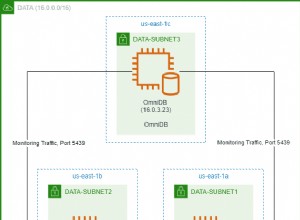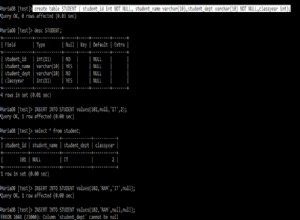Non vuoi utilizzare il database per il controllo del "numero di accessi non riusciti"? Quindi usa un cookie e controllalo. Certo, possono rimuoverlo, ma è una seccatura.
Tuttavia , ho il sospetto che tu stia già ricevendo il nome utente e la password dal database, perché non recuperare anche l'ultimo numero di accessi non riusciti mentre ci sei?
if (isset($_POST['submit_login'])) {
if (isset($_POST['username']) && isset($_POST['password'])) {
$username = mysql_real_escape_string($_POST['username']);
$password = mysql_real_escape_string($_POST['password']);
// id = unique primary key
$rs = mysql_query('SELECT id,Username,Password,Failed_logins,IP_address FROM Users WHERE Username = '.$username.'');
$num = mysql_num_rows($rs);
if ($num > 0) {
// I would add a password hash here to $password, and check against the hashed Password from the database
// But let's check the clean passwords
$row = mysql_fetch_array($rs);
if ($password == $row['Password']) {
// Successful login, set session or whatever you need
// Reset failed logins
mysql_query('UPDATE Users SET Failed_logins = 0 WHERE id = '.$row['id'].'');
header('location: success.php');
} else {
// Failed password check
if ($row['Failed_logins'] > 3) {
// Redirect to captcha
header('location: captcha.php');
} else {
$ip = $_SERVER['REMOTE_ADDR'];
if ($row['IP_address'] != $ip) {
// New ip adress, reset failed logins
$failed_logins = 0;
} else {
// Increment failed logins
$failed_logins = $row['Failed_logins']+1;
}
mysql_query('UPDATE Users SET Failed_logins = '.$failed_logins.',IP_address = '.$ip.' WHERE id = '.$row['id'].' ');
} // End check Failed_logins > 3
}
} else {
// No such Username found in database
$error = 'no_such_username';
} // End username check from database
} else {
// Either username or password is missing
$error = 'incomplete_form';
} // end check for username and password
} // end main submit_login check
Qualcosa del genere.
MODIFICA:
Questo è un codice davvero vecchio e vedo alcuni problemi con esso ora. Ma almeno dovresti sempre usare PDO (preparate statement) per inserire dati nel tuo database.




